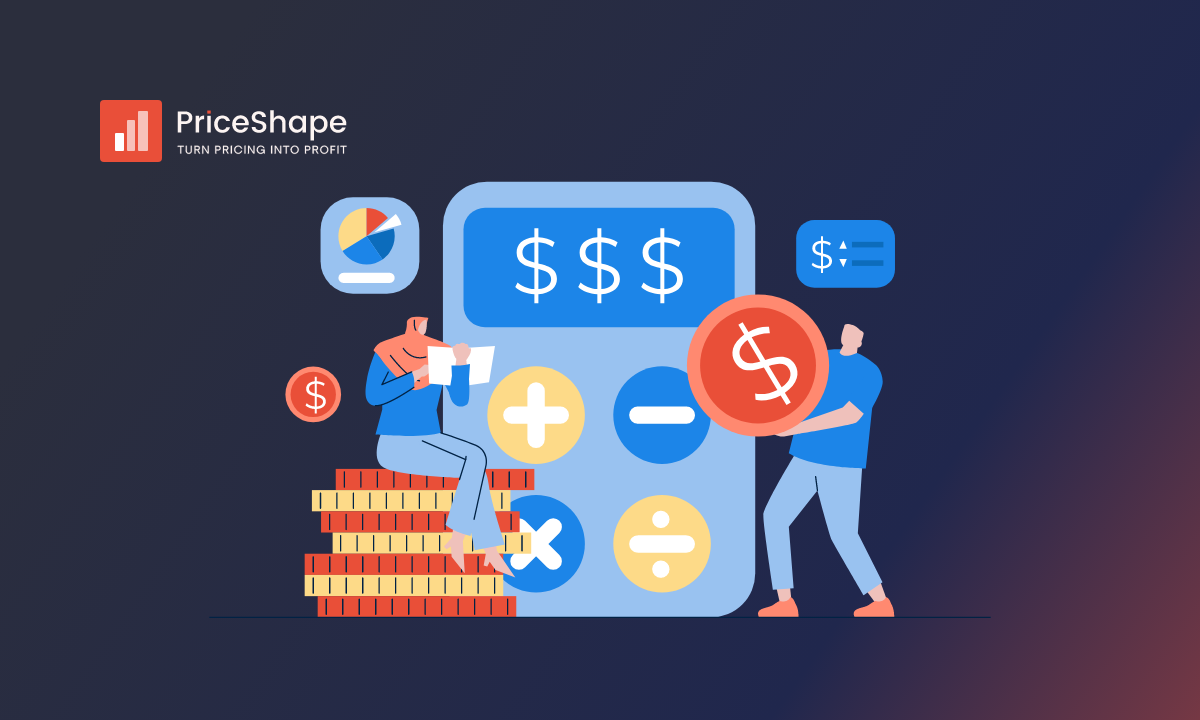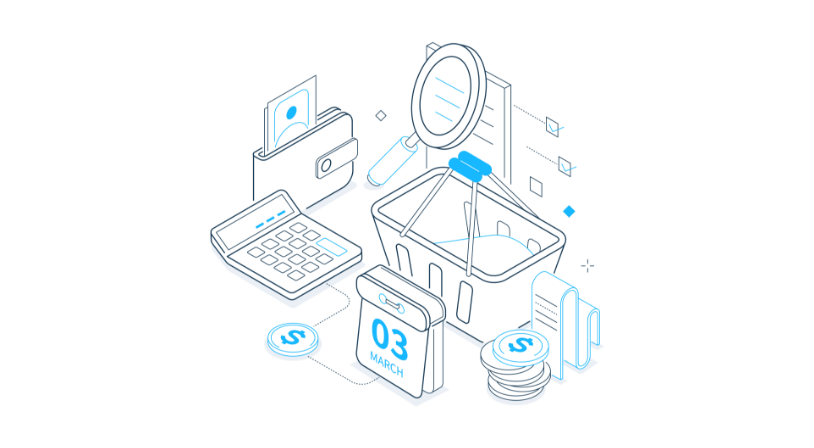How to use cost plus pricing in E-commerce
Read about why this pricing strategy is important to understand to succeed in the competitive landscape.

What is cost-plus pricing?
Cost-plus pricing is a foundational strategy for determining the optimal selling prices of products in e-commerce. It’s a simple and transparent approach that ensures all costs are covered while guaranteeing a profit margin. The method involves calculating the total cost of a product—which includes direct expenses such as production, materials, labor, and indirect costs like shipment, packaging, and overhead. Once the total cost is determined, a predetermined percentage, referred to as the markup, is added to establish the final selling price.
Cost-plus pricing is particularly important for e-commerce businesses because it offers a simple way to ensure profitability in a competitive market. It removes the complexity of calculating prices based on fluctuating demand or competitor actions and instead focuses on internal costs and desired margins. This makes it a great starting point for businesses looking to streamline their pricing strategy.
In this blog post, we’ll explore cost-plus pricing in greater depth, uncover why it’s an essential strategy for e-commerce businesses, and highlight how leveraging a pricing tool can make implementation more efficient and effective. A well-executed cost-plus pricing strategy not only simplifies the pricing process but also helps maintain consistent profitability while offering flexibility to adapt to market conditions.
Why use the cost-plus pricing strategy in E-commerce?
Cost-plus pricing, also called markup pricing, remains a foundational aspect of your pricing strategy, even if you’re an E-commerce store and not producing the products yourself. The formula is straightforward and will look the same as if you were a brand and not a reseller:
Selling Price = Total Cost + Markup
In this equation, 'Total Cost' encompasses all expenses associated with obtaining and delivering the product to the customer, including production costs, shipping, packaging, fulfillment, and other relevant expenses. 'Markup' represents the desired profit margin.

Example of cost-plus pricing for an E-commerce store selling electronics
Imagine you operate an e-commerce store specializing in electronics and are pricing a new smartphone for sale. To determine the selling price using a cost-plus pricing strategy for e-commerce, you would need to follow these steps:
Calculate the total cost:
Cost of product acquisition: $350 (wholesale price from the manufacturer)
Shipping cost: $20 (per unit to deliver to the customer)
Packaging and fulfillment costs: $10
Total cost: $380
Then, you need to determine your desired markup:
Let's say we aim for a 30% profit margin on this smartphone. Then, we would apply the cost-plus pricing formula to the total cost, looking like this:
Markup percentage: 30% (0.30 as a decimal)
Selling price = total cost + (total cost x markup percentage)
Selling price = $380 + ($380 x 0.30)
Selling price = $380 + $114
Selling price = $494
Using the cost-plus pricing strategy as an e-commerce business, you would set the selling price of the smartphone at $494. This price covers the total cost, including acquisition, shipping, and fulfillment expenses, while providing your business with a 30% profit margin.
It's important to note that your selling prices may also consider market conditions, competitor pricing, and perceived customer value. Cost-plus pricing is a foundation that can be adapted based on various factors to stay competitive and profitable in the online market.

The role of pricing tools in E-commerce
A pricing tool can become your best friend when cooperating in the e-commerce universe. This tool can, among other things, help you gather relevant data about your pricing position, competitor prices, and market conditions. Therefore, can a pricing tool like PriceShape also be effective when considering your cost-plus pricing strategy. Here is how it can be beneficial:
Efficiency: PriceShape automates the complex process of calculating your desired markup, saving time and reducing the risk of errors, ensuring accurate pricing.
Data analysis: PriceShape provides insights into market data, competitor pricing strategies, and your sales history, offering data-driven insights for informed pricing decisions.
Competitive analysis: Stay ahead of your competitors by monitoring real-time pricing changes. PriceShape assists with dynamic price adjustments, allowing you to remain competitive.
Customization: Tailor pricing rules to align with your business goals and current market dynamics.
Profit maximization: Identify profit-maximizing opportunities by striking the right balance between price and volume. PriceShape helps you maintain a comprehensive overview of your product offerings.
Dynamic pricing: Implement real-time price adjustments based on demand fluctuations, competitor actions, and inventory levels, enabling agility in the fast-paced e-commerce landscape.
Margin protection: Set minimum profit margin thresholds to protect against selling products at a loss, safeguarding your bottom line.
Pros and cons of cost-plus pricing in E-commerce
Cost-plus pricing is a simple yet powerful strategy that you can use to set prices in your e-commerce business. Its straightforward nature and reliability make it an appealing choice, but to truly make it work for you, it’s worth diving deeper. By understanding its strengths, recognizing where it falls short, and learning how technology can enhance it, you can get the most out of this pricing approach.
Advantages of cost-plus pricing
It’s simple to use
Cost-plus pricing is one of the easiest ways to set prices. All you need to do is calculate the total cost of your product, add a set percentage or markup, and you’ve got your selling price. There’s no need for complicated market analysis, which makes it great if you’re looking for a straightforward pricing solution.
You can ensure profitability
This strategy helps you make sure that every sale not only covers your costs but also generates a profit. This predictability gives you peace of mind and helps you plan for the future with confidence.
Stable pricing builds trust
When your production costs are consistent, cost-plus pricing allows you to maintain stable prices. This stability not only simplifies things for you but also helps build trust with your customers, who appreciate knowing what to expect.
Limitations of cost-plus pricing
It doesn’t consider your customersOne downside of cost-plus pricing is that it doesn’t take customer demand or the perceived value of your product into account. If your price is too high, you might push customers away. If it’s too low, you could miss out on potential profits.
It ignores what your competitors are doing
When you focus only on your costs, you might overlook the fact that competitors are selling similar products for less (or offering more value for the same price). This could make it harder for you to stand out in the market.
It can be tricky in changing markets
If your costs fluctuate—because of supply chain issues or rising raw material prices—it can be hard to keep your pricing consistent. Constantly adjusting your prices could confuse your customers and hurt their trust in your business.
By understanding these pros and cons, you’ll be better equipped to decide if cost-plus pricing is the right approach for your e-commerce store. And with the help of modern tools and software, you can take this strategy even further by adapting it to market trends and staying competitive.
To sum up
Cost-plus pricing remains a good strategy for achieving success as an e-commerce. When coupled with advanced pricing tools like PriceShape, you gain access to the relevant data necessary for thriving as an e-commerce business.
Balancing cost coverage and competitiveness is essential for effective cost-plus pricing in e-commerce. Pricing tools provide the precision and adaptability needed to succeed in the dynamic world of online retail.
Therefore, keep cost-plus pricing at the core of your strategy and equip yourself with the right tools on your pricing journey. By doing so, you'll not only navigate the intricate pricing landscape but also maximize profits in the ever-changing world of online retail.


